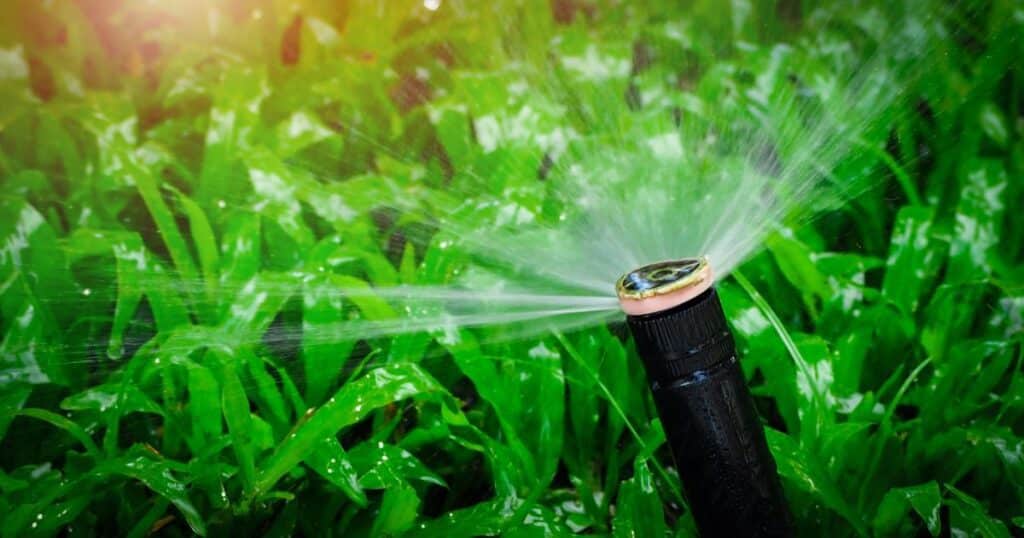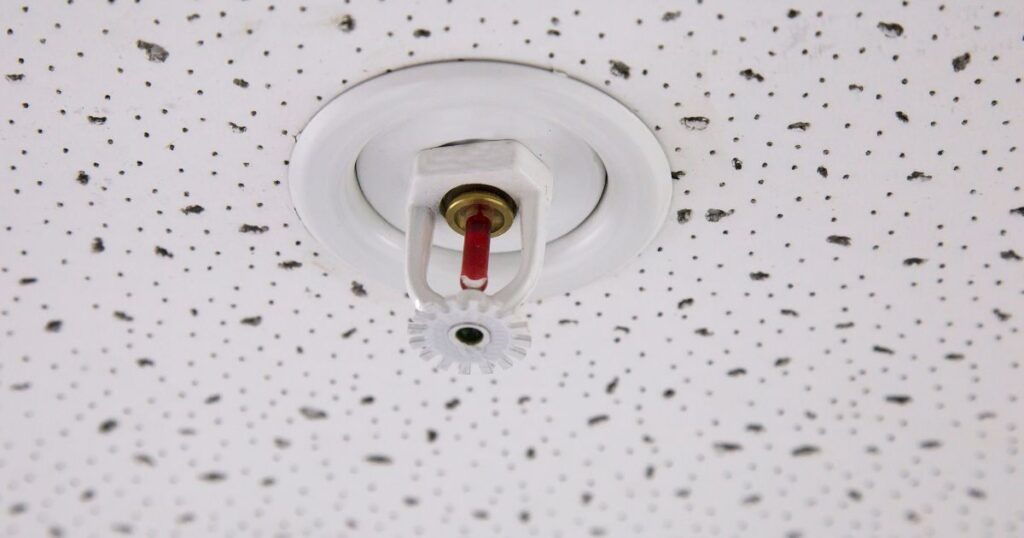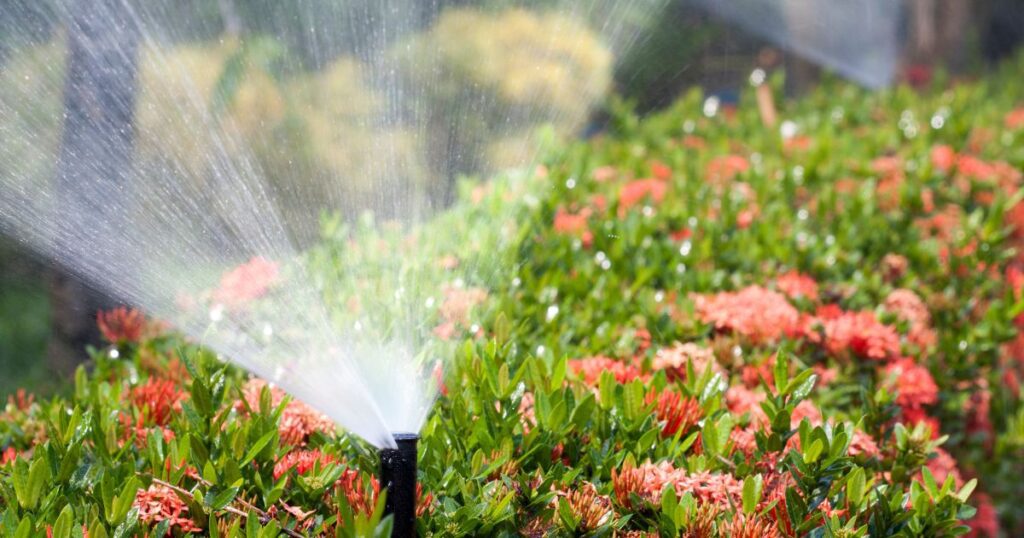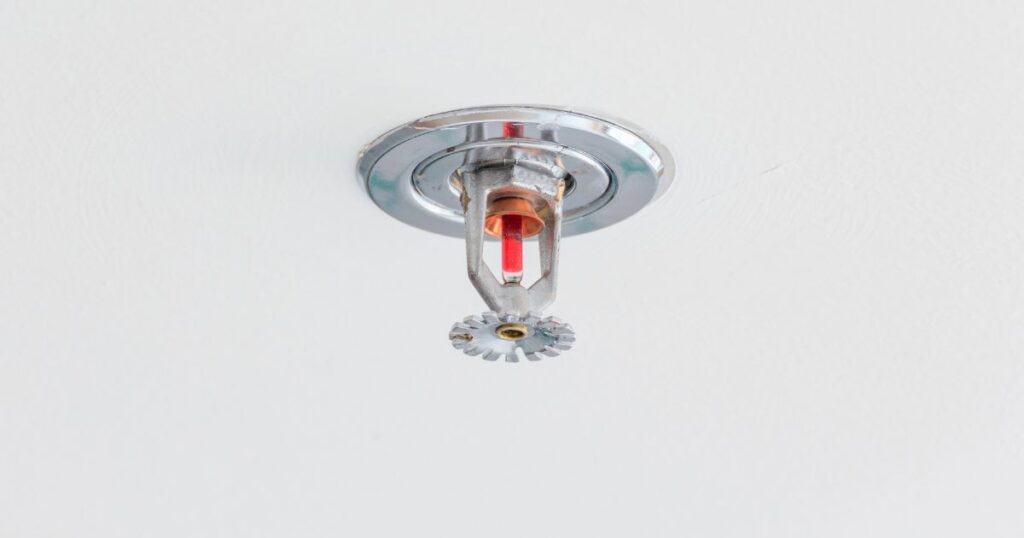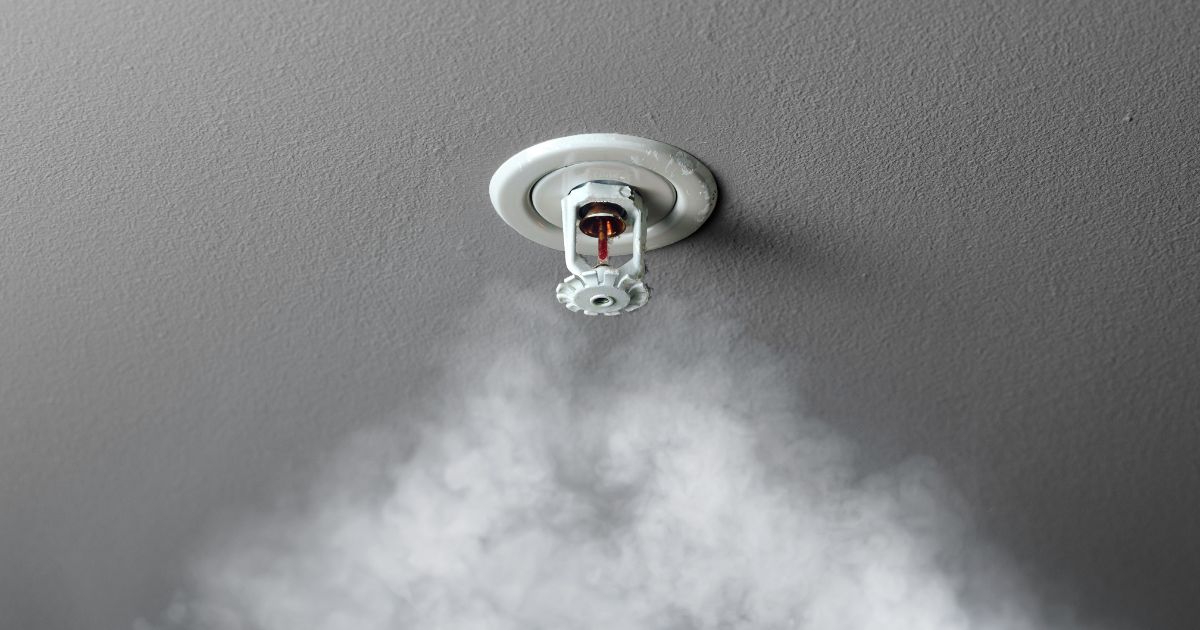
Welcome, fellow fire safety enthusiasts! Today, we’re diving headfirst into the intriguing world of fire sprinkler head protection, where we’ll unlock the secrets to safeguarding these tiny heroes that stand guard against fiery foes. Brace yourselves for a rollercoaster ride of knowledge peppered with expert tips, ingenious tricks, and a sprinkle of mischief to keep you on your toes. Get ready to discover how a touch of TLC can turn your fire sprinkler heads into invincible defenders, leaving those pesky flames green with envy. Let’s ignite this adventure, shall we?
To protect your sprinkler heads, start by keeping the surrounding area clear of obstructions and potential hazards. Regularly inspect and clean the heads to ensure they are free from debris and functioning properly. Finally, consider installing protective covers or guards to shield them from accidental damage.
Importance of Protecting Sprinkler Heads
Sprinkler heads are small but mighty components of a fire protection system. They’re responsible for detecting heat and initiating the flow of water or foam that will extinguish the fire.
Without functioning sprinkler heads, the entire system is rendered useless. Unfortunately, sprinkler heads are also vulnerable to damage from accidental impacts or intentional tampering.
A damaged or broken sprinkler head may not function correctly during an emergency, leaving the building at risk of significant fire damage. Additionally, without proper protection in place, debris or other objects can accumulate around the sprinkler head over time.
This buildup can obstruct the spray pattern of water or foam and prevent it from effectively extinguishing a fire. Ultimately, protecting your building’s sprinkler heads is critical for maintaining an effective fire protection system and reducing property damage in the event of a fire.
Benefits of Protecting Sprinkler Heads
When it comes to safeguarding your building’s sprinkler heads, the advantages extend far beyond maintaining a reliable fire protection system. One notable benefit lies in the realm of cost savings. By understanding how to protect sprinkler heads, you not only ensure their optimal functionality but also avoid potential damages that could result in expensive repairs or replacements, allowing you to allocate your resources wisely.
The cost of replacing damaged or broken sprinkler heads can quickly add up over time. Additionally, if a damaged sprinkler head goes undetected until a fire occurs, you may face even more extensive property damage costs as well as potential liability issues.
Protecting your building’s sprinkler heads also helps ensure that they remain compliant with state and local regulations related to fire protection. Failing to comply with these regulations can result in costly fines and penalties.
Protecting your sprinkler heads can provide peace of mind. Knowing that your fire protection system is functioning correctly and prepared for emergencies can help you feel more secure about the safety of your building and its occupants.
Types of Sprinkler Head Protection
Sprinkler heads are one of the most critical components in a fire sprinkler system. They are responsible for detecting and suppressing fires, which can save lives and prevent property damage.
However, sprinkler heads are also vulnerable to damage from various sources, such as accidental impact, environmental factors, and vandalism. The good news is that there are several types of sprinkler head protection available to keep them safe and functional.
Protective Cages and Guards
Protective cages and guards are designed to shield the entire sprinkler head from physical damage. They can be made of various materials, such as steel or plastic, depending on the level of protection required. Some cages have a mesh design that allows water to flow through while protecting the head from debris or foreign objects that may clog it.
These cages are typically installed around the sprinkler heads in either new construction or retrofitted into existing systems. When choosing protective cages for your system, consider the size and shape of your sprinklers as well as specific hazards present in your environment.
RELATED: How to Clean Fire Sprinkler Heads: A Step-by-Step Guide
Heat Shields and Deflectors
Heat shields and deflectors protect sprinklers from heat sources such as welding torches or nearby equipment that emits heat. These devices redirect heat away from the sprinklers by creating a barrier between them and hot surfaces. Heat shields come in various forms, such as metal plates or refractory materials that can withstand high temperatures without melting or warping.
Deflectors can be installed on walls or ceilings above the fire source to deflect heat away from adjacent areas. When selecting heat shields for your system, ensure they meet local building code requirements with regard to material type, thickness, spacing between plates, and temperature ratings, among other specifications specific to your location.
Sprinkler Head Covers
Sprinkler head covers provide protection against accidental damage and environmental factors such as dust, dirt, and debris. These covers fit over the sprinkler head and can be made of plastic or metal. Plastic covers are lightweight and easy to install, making them a popular choice.
Metal covers are more durable but require professional installation since they must be fitted securely around the sprinkler head to avoid disturbing its position. When choosing sprinkler head covers for your system, consider the material’s durability, ease of installation, and how well it will protect against various hazards in your environment.
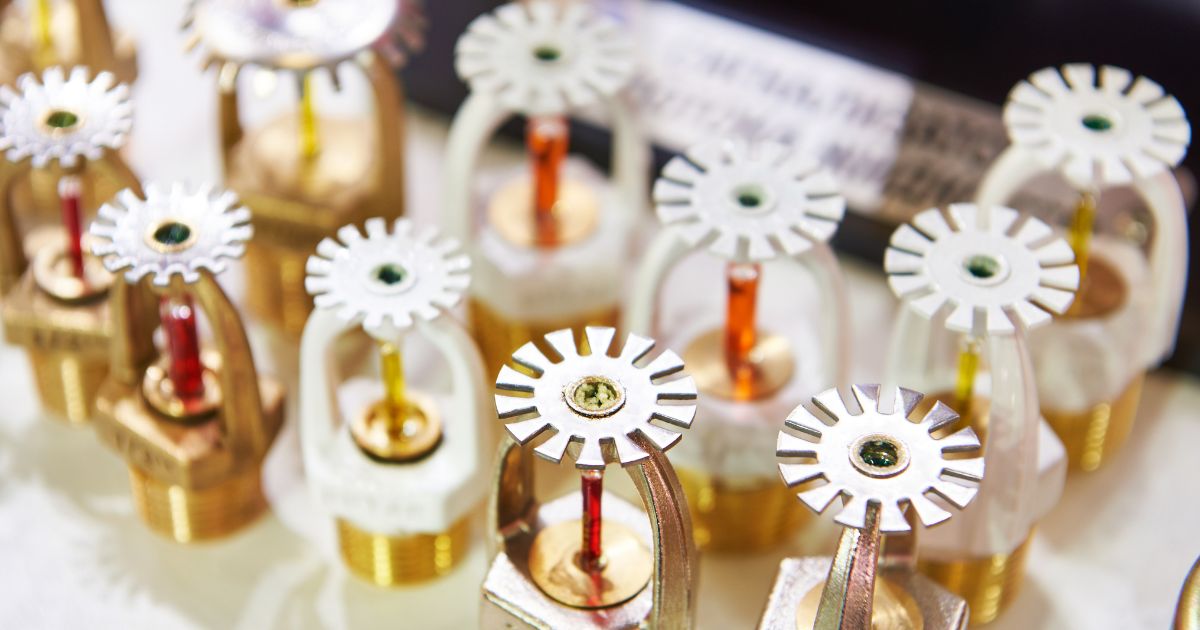
Choosing the Right Protection for Your Sprinkler Heads
Now that you are aware of the different types of protection devices available, it is important to choose the right one for your specific needs. Here are some factors to consider when choosing protection for your sprinkler heads:
Type of building or facility
The type of building or facility you are installing sprinkler heads in can have a big impact on the type of protection that is necessary. For example, if your sprinklers are installed in an outdoor area with a lot of foot traffic, protective cages or guards may be necessary to prevent accidental damage. If your sprinklers are located in a warehouse with heavy machinery, heat shields, and deflectors may be needed to protect them from high temperatures.
You should also consider whether you need protection devices that comply with certain regulations or codes. Some industries, such as healthcare and food service, have specific requirements for their fire suppression systems.
Type of sprinkler system
The type of sprinkler system you have may also influence which protection devices are necessary. For example, if your system uses wet pipe sprinklers and is located in a region with cold weather, heat shields, and insulation may be necessary to prevent freezing and bursting pipes. On the other hand, if you have a dry pipe system, protecting the valve housing from damage may be more important than protecting individual heads.
Fire hazards in the area
The level of fire hazards present in the area where your sprinklers are located should also be taken into account when choosing protection devices. If there is a high risk of combustible materials nearby, such as paper or chemicals, in storage facilities, it may be wise to opt for protective cages or covers that can prevent contact with flames or sparks. In addition to these factors, you should also consider the cost-effectiveness of each option.
While some protection devices may offer superior protection, they may not be feasible for every budget. A professional fire system contractor can help guide you through the decision-making process and make sure that your sprinkler heads are protected in the most effective way possible, given your specific situation.
Installation and Maintenance Tips for Sprinkler Head Protection
Proper installation techniques
When it comes to installing protective devices for your sprinkler heads, it’s important to follow the manufacturer’s instructions carefully. Improper installation can compromise the effectiveness of the protection, leaving your system at risk for damage or failure.
Some key tips to keep in mind include:
- Ensuring the device is compatible with your specific type of sprinkler head and system
- Tightening all bolts and screws securely, without over-tightening, which can lead to damage or bending of the protective cage or cover
- If installing a heat shield or deflector, ensure it is positioned correctly and not blocking the flow of water from the sprinkler head
Hiring a professional vs. DIY installation
While some homeowners may feel confident in their ability to install protective devices on their own, hiring a professional may be a safer option. Professional installers have experience working with different types of systems and devices, ensuring that everything is installed properly and safely. Additionally, they can provide expert advice on which type of protection is best suited for your specific needs.
Common mistakes to avoid
Mistakes during installation or maintenance can lead to serious problems down the line. Here are some common mistakes you should avoid:
- Failing to clean debris from around sprinkler heads before installing protection – can cause obstructions in water flow during an emergency situation.
- Selecting protection devices that are not compatible with your existing sprinkler heads – can render them useless if they don’t fit properly.
- Failing to inspect protection devices regularly – even the most durable materials wear down over time due to exposure to weather, dust, and other elements. Regular inspections can help identify damage early on.
Regular maintenance practices
Maintenance of your sprinkler system and protective devices should be a regular part of your building or home maintenance routine. This ensures that everything is working properly when you need it most.
Some key practices to consider include the following:
- Inspecting protection devices for damage or wear and tear – this should be done at least once a year to ensure there are no cracks in cages or covers and that heat shields have not become warped.
- Cleaning debris from around sprinkler heads – this should be done regularly to ensure that nothing is obstructing water flow during an emergency situation.
- Replacing damaged or worn parts as soon as possible – even small cracks can compromise the effectiveness of protection devices.
Inspecting protection devices for damage or wear and tear
Regular inspections are essential to ensuring that your sprinkler head protection is still effective. Inspections should look for any signs of damage, including cracks in cages or covers, warping in heat shields, or any other issues that could compromise the integrity of the protective device. If any issues are found during the inspection, it’s important to address them right away by repairing or replacing the damaged part.
Cleaning debris from around sprinkler heads
A clear path for water to flow from the sprinkler head is essential during an emergency situation. Debris, such as dust, cobwebs, and insulation, can build up around the head over time, leading to blockage, which may cause decreased water flow. Cleaning these areas regularly helps protect against unnecessary hindrances when you need your system most.
RELATED: How To Clean A Fire Sprinkler Head: Ensuring Safety
Frequently Asked Questions
What can I use to protect my sprinkler heads?
You can use sprinkler head covers or guards to protect your sprinkler heads from damage caused by lawnmowers, foot traffic, or other objects. These covers provide a physical barrier around the sprinkler heads, keeping them safe and functioning properly.
How do I keep my sprinkler heads clear?
Regular maintenance is key to keeping your sprinkler heads clear. Remove any debris, dirt, or grass clippings that may accumulate on or around the sprinkler heads.
How do you maintain sprinklers?
Proper sprinkler maintenance includes regular inspection, cleaning, and adjustment. Check for any damaged or malfunctioning parts, replace worn-out nozzles or valves, and adjust the spray patterns as needed. Also, ensure that the sprinkler system is properly programmed and watered at appropriate intervals.
What is a sprinkler head guard?
A sprinkler head guard is a protective device that is placed over the sprinkler head to shield it from potential damage. It acts as a barrier, preventing accidental impacts from lawnmowers, vehicles, or other objects that could harm the sprinkler head.
How do I stop my sprinkler system from rusting?
To prevent rusting in your sprinkler system, ensure that the components, especially metal parts, are made of rust-resistant materials. Regularly inspect for any signs of rust or corrosion and promptly replace any affected parts.
How do I protect my sprinkler head from grass?
To protect your sprinkler heads from grass, make sure to maintain a clear area around each head by regularly trimming the grass around it. Use a trimmer or hand shears to carefully cut any grass or vegetation that may obstruct the sprinkler head’s spray pattern or prevent it from popping up properly.
Conclusion
Protecting sprinkler heads is an essential aspect of fire safety. By taking the necessary steps to protect your sprinkler heads, you can help ensure that your property, employees, and customers remain safe in the event of a fire.
In this article, we have discussed the importance of protecting sprinkler heads and the various types of protection available. We covered factors to consider when choosing the right protection for your building or facility and shared tips on how to properly install and maintain such protection devices.
Regular maintenance practices are also crucial in ensuring that these protection devices remain in good condition. In addition to preventing physical damage that could render sprinkler systems ineffective in case of a fire outbreak, Sprinklers also help reduce insurance premiums because they lower risk perception by insurance companies which will translate into paying less money.
Therefore protecting them is crucial. By taking proactive measures to protect your sprinkler system components like its heads from vandalism or other forms of destruction like intentional stuffings with foreign objects, even if no outbreaks have occurred before, could save you lots of money as repairs are costly, especially when they involve replacement.
Overall the benefits of protecting sprinkler heads cannot be overstated; it can bolster one’s peace-of-mind while also safeguarding their properties against expensive damages or life-threatening situations. Remember always consult with professionals experienced in installing protective devices before embarking on any DIY installation project yourself – it’s better safe than sorry!

